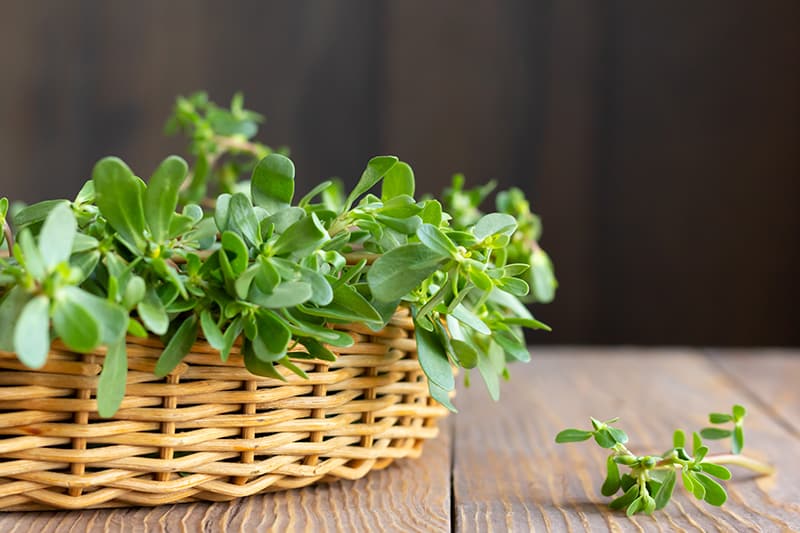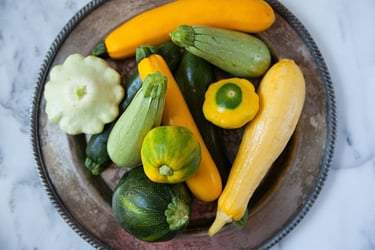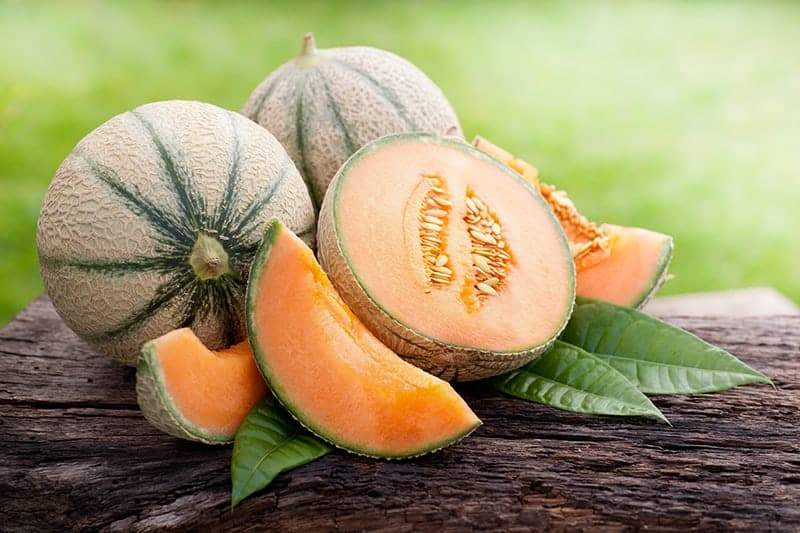Home growers and gardeners tend to be quick to learn one of the most uncom... Read More
- Home >
- Growing Lettuces At Home – What You Need To Know
Growing Lettuces At Home – What You Need To Know

Lettuces are such popular plants and dishes around the world that it’s so hard not to find them in your local restaurants.
Here we discuss the most common types of lettuce you can grow at home, how to grow them, and a unique idea for how to eat them.
Main Types of Lettuce
There are four main types of lettuce that you are likely to grow in your garden and find on your salad plate. They include the following.
Iceberg Lettuce
Iceberg lettuce is the crunchiest variety of lettuce and adds a nice bite to salads and sandwiches. While it has probably the most interesting texture, its flavor is the least pronounced of all the lettuces and works best as a base for other flavors. Iceberg lettuces are round with tightly packed leaves. A good iceberg should be firm and heavy, and will keep in the fridge for as long as two weeks if it is still wrapped; this means it stays fresh for twice the length of time of other lettuce types.
Romaine Lettuce
Romaine lettuce has long, oval leaves that are joined together on the head at the base. It is most popularly used in Caesar salads but works in a variety of recipes. The ends of the leaves are slightly bitter in flavor, while the taste becomes sweeter as you get nearer to the head. If you’re looking for a medium crunch, then this lettuce works well. It is not as crisp as Iceberg lettuce but offers more of a crunch than Butterhead or Leaf lettuces.
Butterhead Lettuce
There are two types of lettuce that fall into the Butterhead category; these are Boston lettuce and Bibb lettuce. Both are round with loosely packed leaves that take on a bowl-like shape, perfect for serving other food in. Boston lettuce is the larger of the two, while Bibb lettuce is sweeter and is generally more expensive to buy.
Leaf Lettuce
Leaf lettuce doesn’t have a head because each leaf grows from its own stalk. This lettuce has the shortest shelf life of any lettuce, with a tendency to wilt easily. However, it is a favorite with home growers as it grows easily and quickly, producing an abundance of delicious lettuce in its first year of being planted from seed. Leaf lettuce comes in three varieties: green, red, and oak. The red and green varieties taste similar to each other, with mild flavorings, though it’s nice to use both types together to create a colorful salad base. The Oak variety has a nutty taste that complements sweet salad ingredients, such as fresh figs.
Salad lovers will know that there are many other types of leaves which form the base of salad dishes, though these are not technically categorized as lettuce. These include spinach, kale, arugula, and radicchio, among others.
Growing Lettuce at Home
Lettuce is incredibly popular to grow at home, in large part because it is so easy to care for, and it grows easily and quickly, so you don’t have to wait around for a long time to reap the rewards of what you have sown. In some instances, lettuce can go from seed to full maturity in just 30 days, which makes it perfect for impatient growers or children who usually like to see a quick turnaround in what they have planted.
Lettuce also likes cooler temperatures of between 70 and 80° F, which make it suitable for growing in plenty of regions, with some warmer climates even being able to grow it all year around. Added to this, lettuce is an incredibly versatile vegetable which can be used in so many recipes, it’s not hard to see why lettuce is the most commonly planted salad vegetable in the US.
When to Sow Lettuce Seeds
Lettuce will germinate in temperatures ranging from 40 to 85° F, so it can be planted in early spring as soon as the soil is ready to be worked on. The exception to this is iceberg lettuce, which requires slightly different growing conditions, but leaf lettuce, romaine lettuce, and butterhead lettuce can all be planted in spring.
If you want a long harvest, then you can plant several batches of lettuce seeds in spring, leaving a two-week gap between each batch. This will give you a continuous supply of lettuce to eat during the summer. Alternatively, you could sow seeds indoors just before spring arrives so that you have seedlings ready to be planted outside in early spring. This will result in you having lettuce to harvest sooner than if you wait to plant seeds outside.
Lettuce is both a spring and fall crop, so you can also plant lettuce seeds in summer to reach maturity in the fall. To do this, sow seeds outside in late summer.
Where to Sow Lettuce Seeds
Lettuce grows best in well-draining soil, ideally with a good percentage of organic materials. It doesn’t need a lot of space for roots, and so, shallow beds will work well for lettuce, as well as grow bags or containers.
Lettuce can be sensitive to acidic soil, so if you suspect your soil has a pH of lower than 6, then you may want to remedy this by adding some lime to it. The ideal positioning of your lettuce will depend on your climate and the time of year you are planting them. Lettuce likes to be in cool temperatures, but it also likes a good amount of sun. In spring or fall, when temperatures are lower, you can place your lettuce in a full sun position. However, in summer, or in climates taht get quite hot, you will need to provide some shade for your lettuce plants to prevent them from overheating. It’s a good idea to use artificial shade that can be moved away once fall arrives so that the lettuce can benefit from full sun during cooler months.
How to Sow Lettuce Seeds
Lettuce seeds should be planted around ¼ of an inch deep in the soil, with around 10 seeds per foot of space and around 16 inches between each row of seeds. As seedlings develop, you will need to thin them out so that each leaf seedling has around 4 inches of space to grow, and each romaine and butterhead seedling has between 6 and 8 inches to grow. You can transplant the seedlings you dig up to another patch, or you can eat these as they are as part of a rapidly growing trend for putting ‘micro leaves’ into salads.
Caring for Lettuce Plants
Lettuce needs very little care to thrive, which is one of the many reasons it is such a great vegetable to grow at home. Lettuce likes to be in consistently moist soil, so water it frequently but lightly. Don’t overwater your lettuce to avoid root rot or the development of disease. Keep a lookout for pests on your lettuce, such as caterpillars and snails. These can be removed by hand as an organic solution to this issue, or you can use baits or insecticides if you find the problem getting out of control.
Harvesting Lettuce
As soon as your lettuce reaches a size you are happy with, you can harvest it for use in your home cooking. Depending on the variety you grow, you will find that your lettuce can be ready in anywhere from 30 to 70 days. There’s no specific way to harvest your lettuce, so you really can do as you please, depending on how much of the lettuce you need.
To harvest a small amount, you can cut off a few select leaves close to the base, or you can chop off the whole vegetable at soil level if you want to have a larger amount. A good tactic is to harvest every other lettuce in a row, as this will give the remaining lettuces more space on either side to continue growing.
With loose-leaf lettuce, you can cut the leaves a few inches above soil level to leave the lower part of the leaf intact. By doing this, the leaf will continue to grow, meaning you can squeeze several harvests out of one plant. All types of lettuce will be more flavorful if you harvest them in the morning, though this isn’t essential.
Lettuce Soup Recipe
Everyone knows that lettuce can be well utilized in salads and sandwiches, but if you’re looking for a different way to use up your yield of lettuce, this soup is a delicious alternative. You can use any type of lettuce, as well as other leafy green vegetables, such as spinach and arugula.
Ingredients
1 chopped garlic clove
1 cup chopped onions
¾ cup peeled and diced potatoes
8 cups chopped lettuce
3 cups water
3 tablespoons butter
1 teaspoon chopped or ground coriander
½ teaspoon salt
¼ teaspoon black pepper
Cook onions, garlic, and butter on a low heat for 5 minutes in a large pan. Once softened, add coriander, salt, and pepper for a further minute. Add potatoes, water, and lettuce and bring to a boil. Once boiling, reduce heat and simmer for 10 minutes, covering the pan. Once the potato is soft, puree the soup in batches in a blender and return all of the pureed soup to a pan. Bring to a simmer, then serve. This recipe makes 4 portions.
Related Content
-
All about Spider Mites and How to Get Rid of Them
-
What is Perlite? What is its use in the garden?
Have you ever used a bag of commercial potting soil? If so, you may have n... Read More
-
Top 15 Most Beautiful Flowers You Can Grow In Your Garden Immediately
"Flowers are the music of the ground. From earth's lips spoken without sou... Read More
-
8 Best Bedroom Plants That Purify The Air & Improve Your Sleep Quality
If you’ve been thinking of adding some plants to your sleeping quarters, t... Read More







